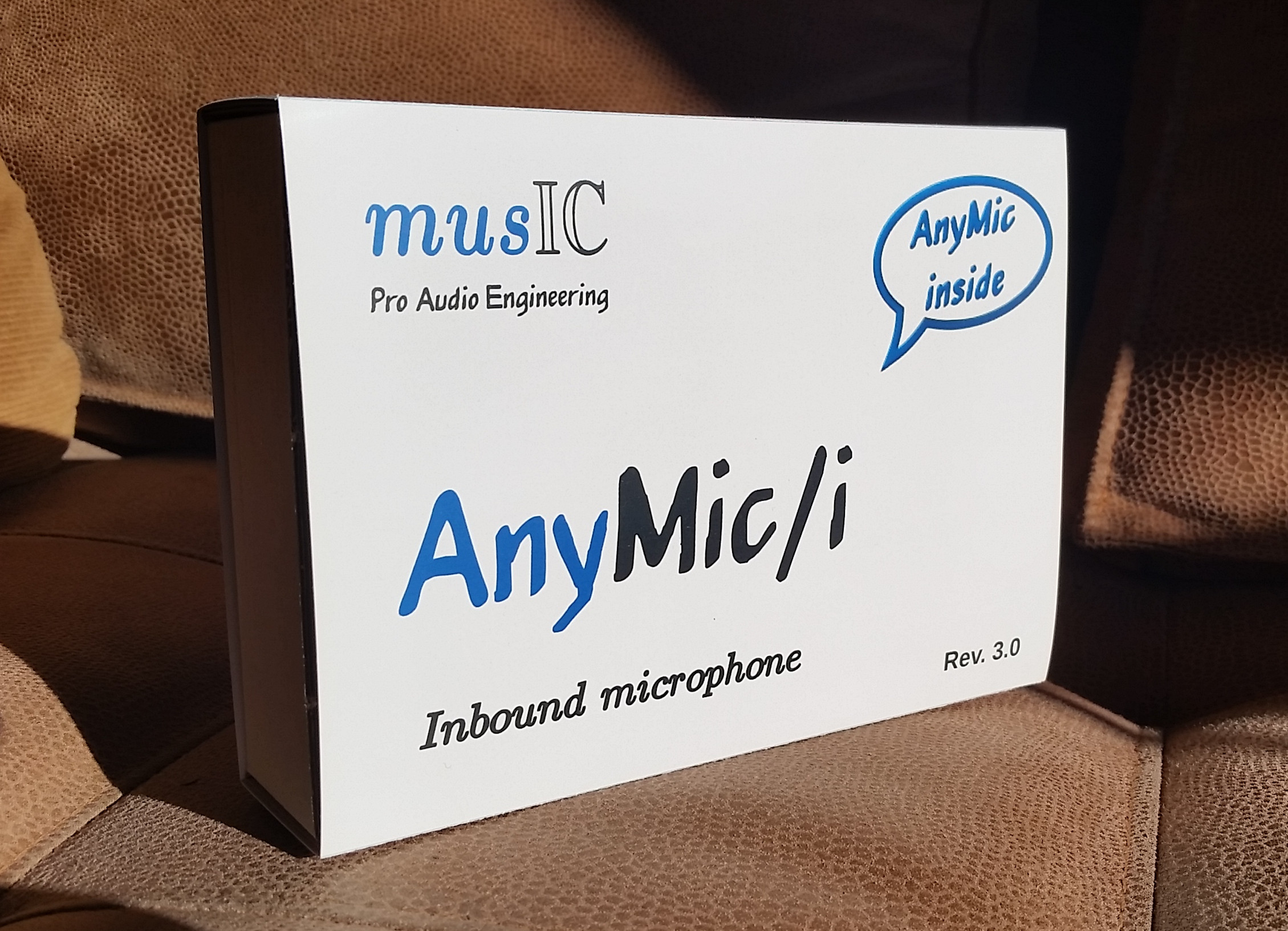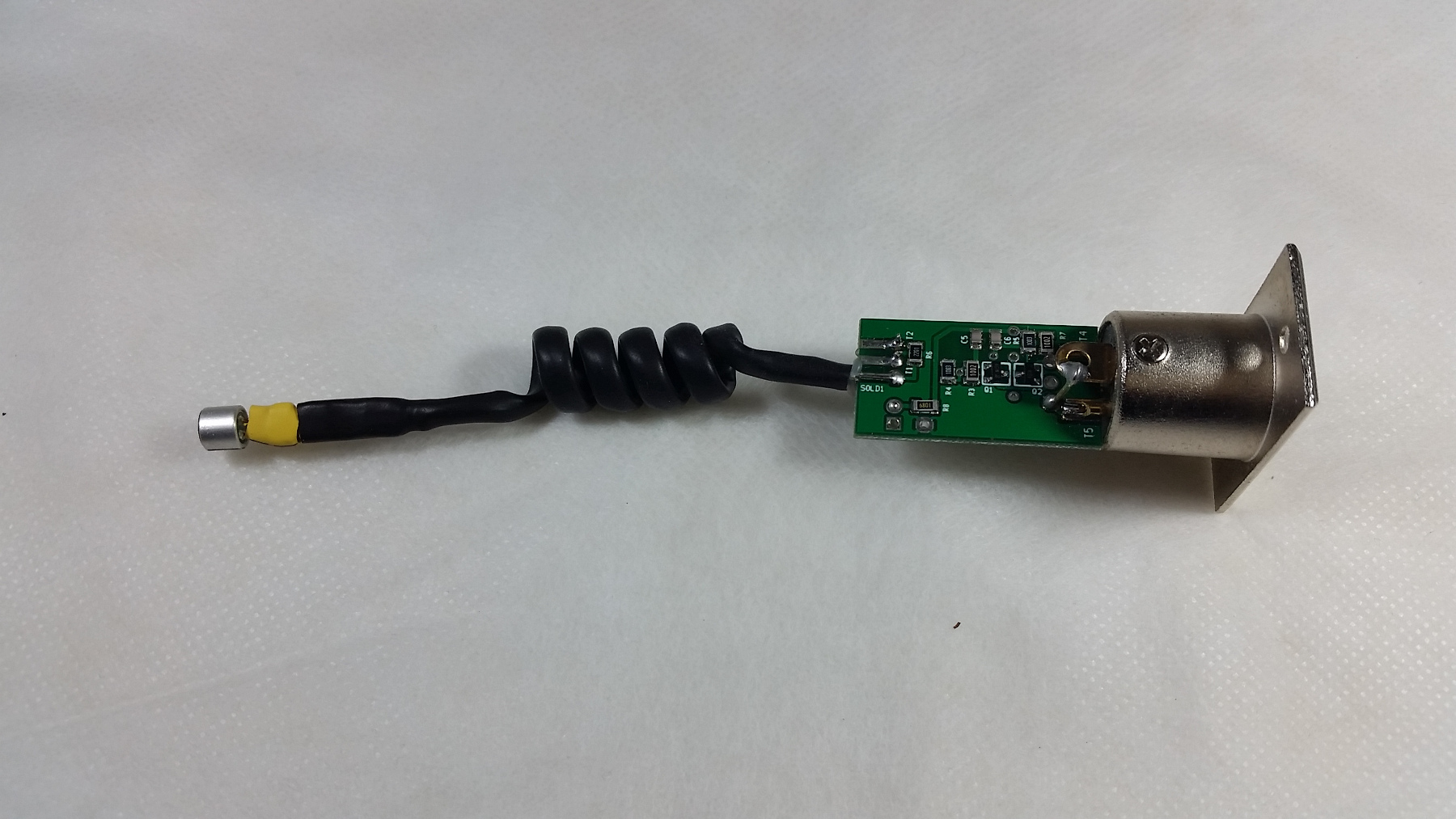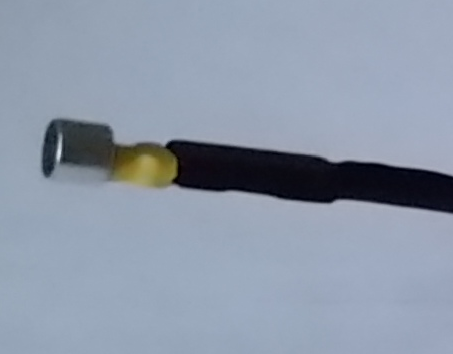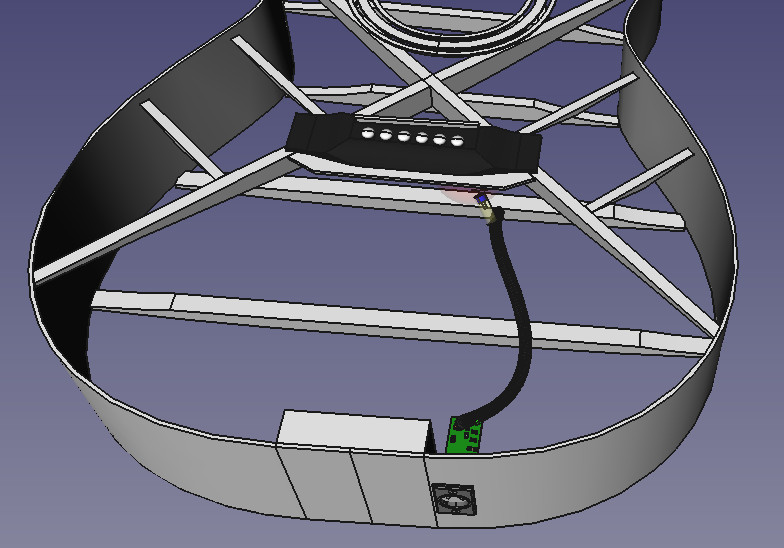
AnyMic/i ... is an internal instrument microphone ('inbound microphone') for acoustical instruments - where it acts with all the comfort of a pickup system but convinces with the tremendous sound qualities of a condenser microphone
AnyMic/i is a modern microphone-based sound pickup solution taking all contemporary scientific knowledge of instrument physics into account. The development was accompanied by a lot of help and advice from highly qualified lutihers in order to avoid any infringement of the integrity of the instrument and to achieve a perfect result by having your instrument sound perfectly natural.
Nothing is attached to the soundboard (top plate) ...
So the integrity of the instrument is fully preserved due to the way of mounting in the side.
You can insert an AnyMic/i straight into the instrument - without any futher internal cabeling.
Like any other condenser microphone it is powered from phantom power of a usual XLR microphone cable.
Forget about any 'empty battery' troubles ....
- AnyMic/i only needs the mounting hole in the side ...
- No batteries needed and no cables inside the instrument
Drill, insert, fixate ... done!
You just have to connect the microphone cable - and here we go
... with a true microphone sound quality ...



 |
With AnyMic/i the microphone cartridge is placed and suspended by a gooseneck in the sonic space inside the instrument. Any touch with the soundboard (top plate) is avoided in order not to compromise the integrity of the instrument. An ultra-light gooseneck holds the microphone cardtridge suspended in free air-space just 3cm away from the center of vibration. In this zone all sound qualities of the instrument are fully present, so that even low-cost instruments sound considerably better. For top-class instruments is therefore guaranteed, that their sound qualities are fully presented. The instrument will show-up with its sound qualities to full extend even if it is played amplified through an acoustic amplifier, a mixer or PA (public acoustics system). |
Features:
- Suitable for practically all instruments with an acoustic body
- Classical and western-guitars, Mandolines, Ukuleles, Acoustic bass, ...
- Drums, Kongas, Bongos, Cajons...
(A soundhole cover is necessary if the instrument should be played amplified)
- Autonomous XLR connector. So it can be used in parallel with an existing transducer-/piezo system
- No batteries or power supplies needed
- Mounting in minutes - all from the outside
You do not even have to loosen the strings ... - Easiest change of microphone cartridge (push/pull) within minutes.
- Slim-line XLR connector with gold-plated contacts
- Long-life without impact on sound due to avoidance of electrolytic capacitors
- Differential transmission technology ("balanced"/"symmetric") with noise elimination
- Due to the XLR connector no DI box is needed. AnyMic/i is implicitly a DI.
Technical data:
- Frequency range: 20..20Khz
- Signal/Noise ratio: >60db
AnyMic/i needs:
- A XLR microphone input on a pre-amp with phantom-feed (24..48Volts; market-conforming)
- A XLR micorophone cable (preferably with gold-plated contacts)
- An external equalizer is recommended, if you are not using a mixer, an acoustic amplifier or PA system which have equalizers built-in usually; e.g. with an so-called 'Audio Interface' (1st-Level-Mixer), that has only 'volume controls' for the input channels.
... and you might have all this, if you have already worked with traditional microphones ...
Why AnyMic/i ?
- Positioning in front of microphones mounted to a microphone stand is history with an AnyMic/i.
An AnyMic/i is and remains permanently in position since it is firmly mounted inside your instrument. Regardless how you move with your instrument ... in the studio, on stage, the rehearsal room or whereever else. You just enjoy the comfort of a pickup-system with the sound qualities of a true condenser microphone ... in combination ... - The instrument sound is -recorded with a microphone- far better than with any other solution
- Noise from the environment (door flapping, steps, coughing, rustling from the audience etc.) is much better shielded, if the microphone is built into the instrument body. If a soundhole cover is used, any outside noise is excluded in general anyway.

